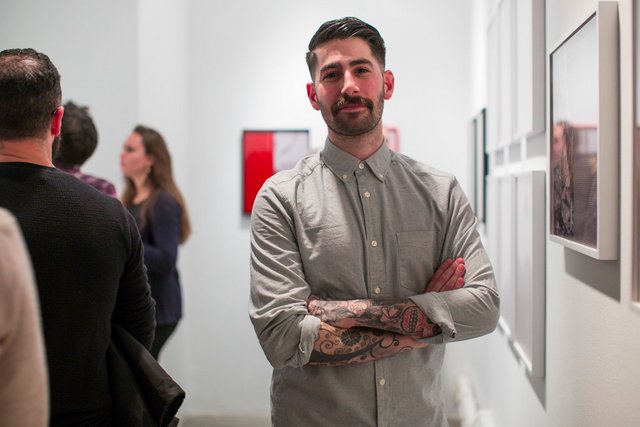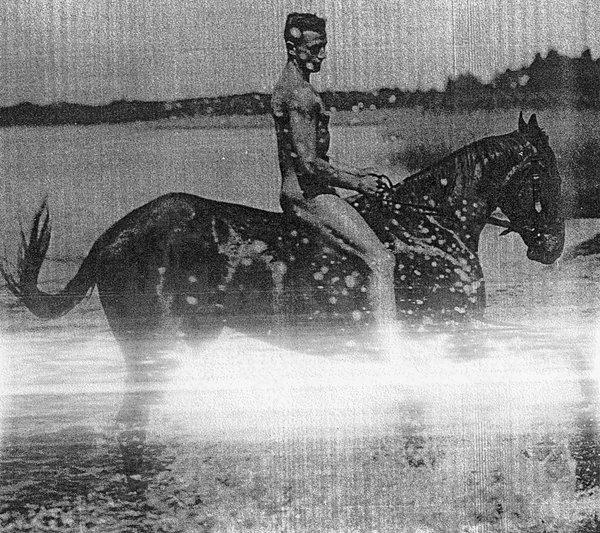
Pacifico Silano had his first solo show last January at Clamp Art in Chelsea. A graduate of SVA’s MFA program in photography, Silano is interested in archival photography and suppressed narratives such materials preserve. We sat with the Brooklyn based artist to discuss his methodology, influence of minority histories, and his future projects.

Q: From your Against Nature series to Pages of a Blueboy Magazine series, archival materials play a crucial role in your work. And archival materials are becoming more and more commonly used in contemporary art. How do you work with archival materials?
A: I’m so fascinated by history and naturally gravitate towards materials from the past. The idea of the archive as a medium has become a passion of mine. I’m particularly interested in making interventions with found materials. The finished product almost becomes collaboration with a part of history. I like to tear images up, rebuild, reposition and scan them. It’s part of this working process that helps bring new meaning to sometimes forgotten imagery and artifacts.

Q: In Against Nature you mined the mostly neglected history of anti-gay propaganda during the Nazi Germany. Your work investigates the execution of thousands of gay individuals mostly by re-editing the saved material. What was your process like?
A: My process for this project involved a lot of prior research. It started with a trip to the Homomonument in Amsterdam, NL, the world’s first memorial to homosexuals persecuted during the holocaust. Afterwards I spent a lot of time in libraries, reading history books and collecting imagery. I made a lot of aesthetic choices very early on, such as size and color palette. It created these parameters to work in that kept the project visually coherent and strict.
When it came time to creating the actual work I approached each piece as if it were a painting, adding elements and removing them until I was satisfied with the final outcome. There was a lot tearing of paper and time spent photocopying photocopies until images fell apart and became something else.
Q: In Icons, Book of the Dead or Pages of a Blueboy Magazine, you are changing the pre-determined modes of reading visual data. 80s porn stars or 50s famous gay celebrities gain further or totally different meanings in your compositions. How important is to influence the viewer perception for you?
A: It’s always an exciting challenge to take something people are familiar with and change preconceived notions. I have a very specific thing I usually want to say when I’m creating a piece with appropriation. It’s important to get that message across to my viewer but still have the final outcome be open to other interpretations. It’s all about finding that balance.

Q: HIV/AIDS awareness is another major part of your work. The way you approach the subject matter is also very archive-based. What do you think about the amount and the content of the archived materials on this subject?
A: I wish there was more for us to look at! That’s part of the reason I make the work that I do. I’m always trying to find parts of a forgotten history. It’s important to find those stories and preserve them. LGBTQ people have value and importance. I’m glad that mainstream culture finally understands that concept because it’s taken long enough.

Q: What are you working on recently? Any new projects?
A: I’m getting ready to start a Workspace Residency at Baxter St CCNY that I’m very excited about. Since my solo show opened this past January, I’ve been making all new work and refocusing my attention on the late 1970s/early 80s AIDS epidemic. I was in a bit of a creative rut about a year ago so I stopped creating work around the subject. I’m feeling really inspired again and finding new ways to explore this part of history.
To see more of Pacifico’s work, click here.








